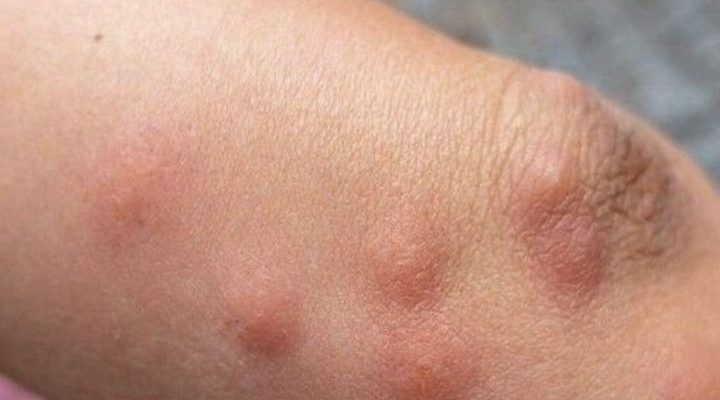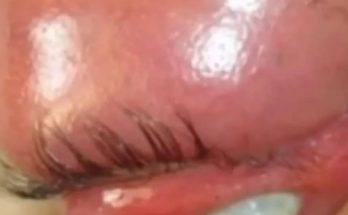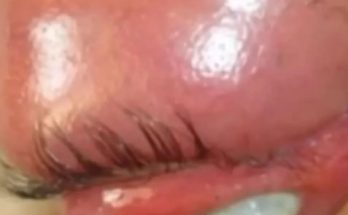Bed bugs are tiny, reddish-brown insects that have adapted to feeding on human blood. Their ability to find human hosts is attributed to their attraction to body heat and the carbon dioxide exhaled during sleep. While their name suggests a preference for hiding in beds, these pests can be found in a wide range of furniture, carpets, electronics, and even in small cracks in walls. That being said, they are most commonly found in mattresses, bed frames, and box springs due to those places being closest to their sleeping hosts.
Unlike other household pests, bed bugs are elusive during the day and usually stay hidden in dark, secluded areas when their hosts are not around to feed on. Bed bugs are thought to be nocturnal, but the timing of their activity is more aligned when people are sleeping rather than at a specific time of day. Bites from bed bugs can cause discomfort, itchiness, and irritation which make it essential to identify and address a bed bug infestation promptly.
Signs of Bed Bug Bites
Recognizing bed bug bites is essential for early detection and management of an infestation. Bed bug bites exhibit distinct characteristics that can help distinguish them from other insect bites. Here are key indicators to look out for:
- Linear Welts: Bed bug bites often appear in a straight line or zigzag pattern on the skin.
- Intense Itchiness: These bites typically cause significant itching that is often more intense than many other types of insect bites.
- Location of Bites: Commonly found on body parts exposed during sleep like arms, legs, and the face.
- Color of Bites: The bites may appear red, pink, or purple in color and often have a darker red spot in the middle where the bite occurred.
What Does a Bed Bug Bite Feel Like?
The sensation of a bed bug bite is often imperceptible at the moment it occurs because of the insect’s unique mechanism of biting. Bed bugs inject a combination of an anesthetic and anticoagulant during their bite which numbs the bite area and prevents blood from clotting. This allows them to feed unnoticed while their host is asleep. As a result, individuals may not realize they’ve been bitten until hours or even days later.
The severity of reaction to a bed bug bite depends on each individual’s allergic response. Some people are fortunate enough that their body’s histamine response has no reaction at all. For those less fortunate, the aftermath of a bed bug bite typically involves significant itchiness which can become quite intense and may disrupt sleep. The irritation and need to scratch can be severe which can lead to potential skin damage and further complications. In some cases, excessive scratching can result in bacterial infections if the skin is broken.
Bed Bug Bite Appearance
Bed bug bites are distinctive in appearance and pattern, making them identifiable against other insect bites. Typically, these bites appear as small, red or pink bite marks on the skin that have a raised center, similar to the look of mosquito bites. What sets bed bug bites apart is their strategic arrangement on the skin. They often appear in groups of three to five bites and display a linear or zigzag pattern.
This characteristic pattern emerges as bed bugs crawl across surfaces that come into contact with skin while their host is sleeping. After locating a host, they probe the skin to find an optimal spot where blood flow is most accessible. Once a suitable area is found, the bed bug feeds for several minutes before retreating to its hiding spot. The bites are generally the size of a mosquito bite or smaller and can be a clear indicator of a bed bug presence in your living space. This patterned appearance, combined with their size and color, is a key sign to watch for in identifying bed bug infestations.
Bed Bug Bite Location
Bed bug bites usually occur on areas of skin exposed during sleep which make certain parts of the body more susceptible. Common sites for bed bug bites include:
- Face: Visible on cheeks, forehead, and around the eyes.
- Neck: Often found on the sides and back of the neck.
- Arms: Common on both the upper and lower arms.
- Hands: Including fingers, palms, and the back of the hands.
- Legs: Found anywhere on the calves, shins, and thighs.
If chests or backs are exposed at night, bites can appear there as well. Anywhere that is exposed and in contact with the mattress is an area that bed bugs can bite. Covering up with clothing might not stop bed bugs but it can help reduce the amount of exposed skin they can feed on.
Risk of Bed Bug Bites
Generally, bed bug bites are considered more of a nuisance than a serious health threat. They are not known to transmit infectious diseases to humans, but their bites can pose other health risks. Here are some of the most common risks associated with bed bug bites:
- Allergic Reactions: Some individuals may experience allergic responses to bed bug bites which can range from mild to severe.
- Skin Irritation and Swelling: In more serious cases, the area around the bite may become significantly swollen or irritated and possibly lead to blister formation.
- Hives and Rashes: There’s also a risk of developing hives or a more severe rash, depending on the individual’s sensitivity to the bites.
- Stress and Anxiety: Being bitten repeatedly at night can affect an individual’s mental health. Since bed bugs are extremely difficult to exterminate, extended periods of being bitten can even lead to PTSD and sleep deprivation.
Signs of Bed Bugs
Identifying the presence of bed bugs in your living space is crucial for timely intervention. These pests leave behind several telltale signs that can alert you to their presence. Keep an eye out for the following indicators:
- Rust or Brown Colored Spots: Stains are often found on mattresses which are the result of bed bugs being crushed or their excrement. Individual stains that are found in the middle of bed sheets are usually indicators that a bed bug was accidentally squashed while feeding. Large clusters of stains found in the seams of mattresses are usually the signs of bed bug poop that are left in areas where bed bugs congregate and stay hidden.
- Shedded Insect Skins: As bed bugs mature, they shed their skins. These skins resemble small, translucent leaf-like husks and can accumulate over time if bed bugs are present for a while.
- Musty Odor: A distinctive, unpleasant musty smell is sometimes noticeable in areas heavily infested with bed bugs.



